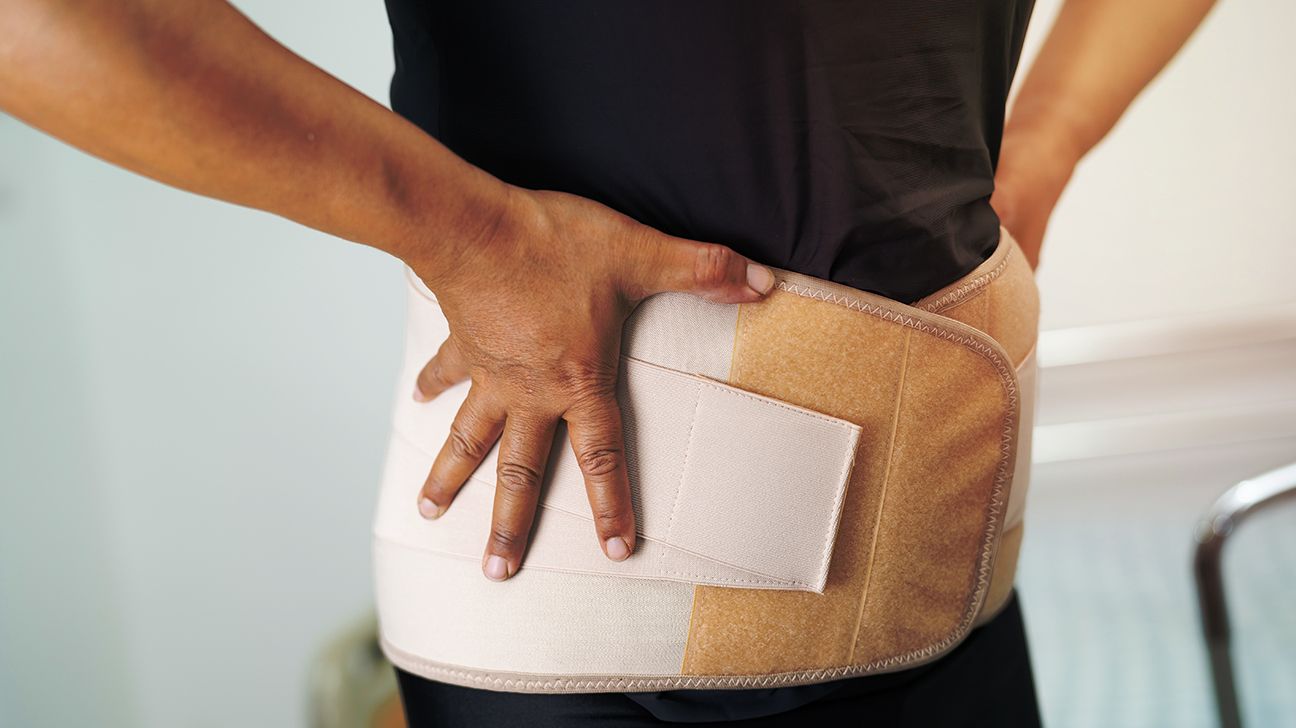An abdominal binder is a wide compression belt that encircles your abdomen. An abdominal binder may be used to speed-up the recovery process after abdominal surgery.
Abdominal binders come in many sizes and widths. Most are made from elastic and have Velcro or hook and loop closures. Some abdominal binders offer secondary lumbar support. Others have straps that hold surgical drainage tubes in place.
Your doctor may recommend that you wear an abdominal binder after:
- a caesarean section
- bariatric surgery
- an exploratory laparotomy
- a hysterectomy
- a tummy tuck
- spinal surgery
A carefully-positioned abdominal binder may be used in people with spinal cord injury to help:
- support the abdomen
- maintain abdominal pressure
- improve respiratory function

Benefits
- Wearing an abdominal binder may decrease post-operative pain.
- It may also decrease psychological distress following your procedure.
- They also may promote deep breathing.
After surgery, an abdominal binder is thought to:
- support your surgical incision
- relieve pain
- get you moving more
- reduce swelling
There’s not a lot of scientific evidence on the benefits of abdominal binders. A 2014 systematic review found that abdominal binders may decrease early post-operative pain and reduce psychological distress.
There’s some evidence abdominal binders may also promote coughing and deep breathing after surgery, and improve overall mobility.
More research is needed to prove abdominal binders definitively help prevent fluid build-up (seroma) after abdominal surgery or improve overall physical function.
Using an abdominal binder after a hysterectomy may help:
- hold your abdominal muscles together to relieve pain
- increase circulation at your surgical site to promote healing and decrease swelling
- make physical activity more comfortable
- strengthen abdominal muscles
According to a 2010
Research showed that applying compression to the abdomens of people with OI helped prevent blood pooling.
Wearing an abdominal binder also increased standing systolic blood pressure by 11 mmHG and diastolic blood pressure by 6 mmHG. To put these results into perspective, gravity suits worn by fighter pilots to prevent fainting during extreme flying conditions have a similar effect on blood pressure.
If you have OI, an abdominal binder may be a fast and effective alternative to prescription drugs. Many prescription drugs used to treat OI may cause negative side effects.
Some people wear an abdominal binder to help support their core during daily activities and heavy lifting. Women may use an abdominal binder after vaginal childbirth to help shrink the uterus and lose weight.
However, there’s no scientific evidence that binding your belly gets you back into your pre-pregnancy jeans faster.
You may wake up from anesthesia after abdominal surgery wearing an abdominal binder. Depending on the type of surgery you have, an abdominal binder may be worn for up to six weeks or for the full the duration of your recovery.
As you heal, your doctor may let you wear the binder less.
You can also purchase abdominal binders at most drugstores or medical supply stores. When choosing an abdominal binder, it’s important to get the right size.
To determine your size, measure the widest part of your body the binder will cover. For women, the widest part is usually the hips. For men, it’s usually the waist.
Wrap the abdominal binder around your abdomen, under your clothes, with the closures in the front. Make sure the binder is snug, but not too tight. You should be able to breathe comfortably.
Keep the abdominal binder clean and dry. If it gets wet or dirty, it may irritate your skin or increase your risk of infection. Most abdominal binders may be spot-cleaned and air dried. Follow the manufacturer’s cleaning instructions.
Risks
- Compression around a surgical site may cause some discomfort.
- You may also find breathing to be uncomfortable.
- These garments may cause skin irritation.
Wearing an abdominal binder is generally well-tolerated. Some people find it uncomfortable and hot. Although it’s meant to ease pain, compression around a surgical site may actually increase pain.
It may also make breathing uncomfortable, although there’s no evidence that using an abdominal binder causes or worsens breathing problems.
Compression garments may cause an allergic reaction, itching, rash, and other skin irritations. To reduce your risk, use an abdominal binder that fits properly and is made of hypoallergenic fabric.
There’s some debate about whether or not abdominal binders increase the risk of deep vein thrombosis (DVT). DVT occurs when a blood clot develops in at least one of the deep veins in your body. One 2007
This may be associated with the development of DVT. Because abdominal surgery alone increases DVT risk, this leads some to question if using an abdominal binder after abdominal surgery is a good idea.
On the other hand, a major DVT risk factor is immobility after surgery. So, in theory, abdominal binders may actually decrease DVT risk because they may help increase mobility after surgery.
When used correctly, an abdominal binder may aid in your recovery after abdominal surgery. It may also help support your core muscles and reduce the symptoms of OI. When an abdominal binder is prescribed by your doctor, your medical insurance may cover the cost.
If abdominal surgery is in your future, talk to your doctor about whether an abdominal binder is right for you. Unless you know you’ll be given an abdominal binder, get one ahead of time and take it with you on the day of your procedure.
Be sure to follow your doctor’s guidelines on how long to wear the binder. Tell your doctor if you notice any redness, warmth, or unusual swelling on or around your incision. If you have any questions about the fit of an abdominal binder or if you experience any side effects, contact your doctor.
